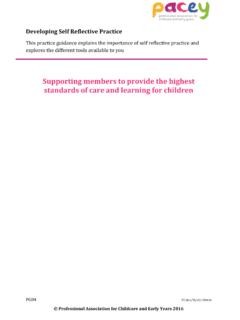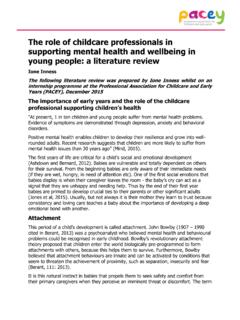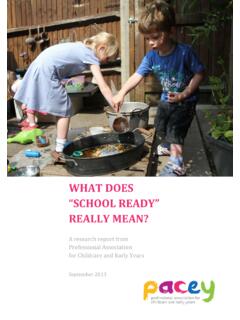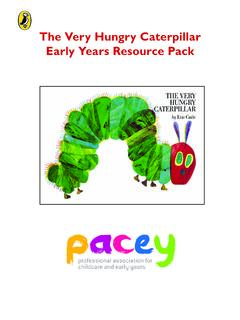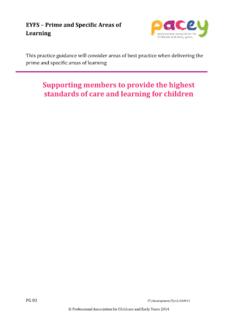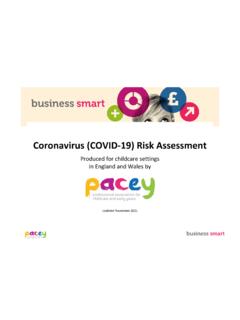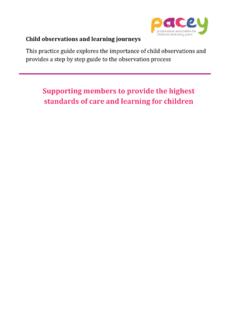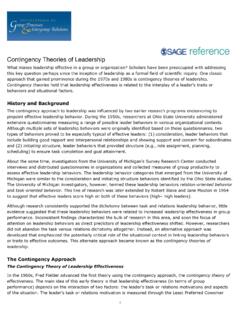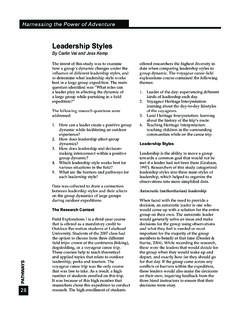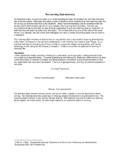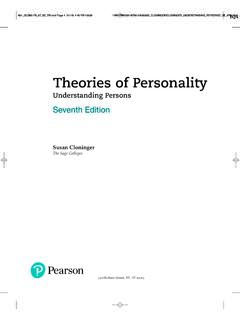Transcription of Theories of Child Development - PACEY
1 Page 1 of 17 PG028 ST/dev/v2/180416 Professional Association for Childcare and Early Years 2016 Theories of Child Development A practice guide to help you understand Theories of Child Development and their influence on early years practice Supporting members to provide the highest standards of care and learning for children Page 2 of 17 PG028 ST/dev/v2/180416 Professional Association for Childcare and Early Years 2016 This practice guide has been developed for all childcare professionals including childminders, nursery workers and nannies This guide covers: 1.
2 Introduction 2. Importance of Theories of Development 3. Constructivist theory 4. Social constructivist theory 5. Behaviourist theory 6. Social learning theory 7. Psychoanalytical theory 8. Humanist theory 9. Attachment theory 10. What do Theories mean for practice? 11. PACEY Professional Standards 12. Resources 13. Frameworks and Legislation 14. Support from PACEY 1. Introduction In this practice guide, we ll be exploring how Theories of Child Development have influenced early years practice over the years.
3 As you consider and reflect on your own childcare practice, it is useful to have an understanding of these Theories which will help to inform developmentally appropriate practice. They will also contribute to your understanding of certain behaviours and how children learn. As well as considering each of the Theories , we will also look at how each is reflected in or has influenced practice in early years settings. 2. Importance of Theories of Development The Theories that we will consider in this practice guide have been developed from observational research.
4 In the most part the theorist has made an attempt to explain certain aspects of Child Development . A theory is an explanatory framework which is then either built upon and expanded or in some cases discredited by further research. Some aspects of science such as neuroscience can also be used to support certain Theories . As with all ways of working, those that put forward the Theories have done so from a specific background of values and beliefs. You might want to consider the following as you read about the different Theories : Page 3 of 17 PG028 ST/dev/v2/180416 Professional Association for Childcare and Early Years 2016 1.
5 Nature v nurture are we biologically or genetically pre-programmed or are we influenced by our environment? Or is our Development defined by a combination of the two? 2. Is Development universal or diverse do we all need to have the same kind of experiences in order to develop or will a diversity of experiences result in the same Development ? 3. Is the Child an active or passive participant in their own Development ? 4. Does Development take place in periods of sudden growth or is it a more gradual process whereby skills are built upon?
6 It is also important to recognise that no one theory can fully explain all aspects of Development , some focus on cognitive Development whilst others are more about social and emotional Development . It is important to develop our understanding of children s behaviour, reactions and ways of learning through taking an eclectic approach to theory along with additional research as well as cultural influences. Overall our understanding of theory is very important in the planning and delivery of developmentally appropriate practice and to support the implementation of evidence based practice.
7 In this practice guide, we outline some of the more well-known Theories of Child Development in order to further your own understanding of how children learn and develop. We have also included some suggestions of how each theory might be shown or affect practice. 3. Constructivist theory Jean Piaget (1896 1980) Piaget was a constructivist which means that his theory was based on the belief that children construct their thoughts and understanding of the world based on their experiences. He saw learning as an ongoing process where children made use of what he called schema to construct their learning.
8 This is a four part process: 1. Assimilation children construct a schema about their world based on their current experiences. (A four legged furry animal is called a cat) 2. Equilibrium this schema fits with the Child s current experience and everything is in balance (the Child points to the cat in the house and the parent says cat) 3. Disequilibrium an experience occurs which changes or challenges the current schema (on a visit to a friends house the Child experiences a four legged furry animal called a dog) 4.
9 Accommodation the Child changes the original schema to include the new information (different four legged furry animals exist, some are cats and some are dogs) Page 4 of 17 PG028 ST/dev/v2/180416 Professional Association for Childcare and Early Years 2016 Piaget also thought that children go through four developmental stages which take them from birth to maturity: Sensori motor stage (birth to 18/24 months) During this stage the baby is experiencing the immediate environment and the effect that they can have on it.
10 During this time the Child will develop an understanding of object permanence , the fact that something still exists even if you cannot see it. (There are links here to attachment theory which you will read about in section 9). They will also start to use symbolic language. Pre-operational stage (18/24 months 7 years) Young children are using symbols in their thought, speech and play. At this stage children are very ego-centric, they believe that the world revolves around them and their needs and find it difficult to see the view of others.

